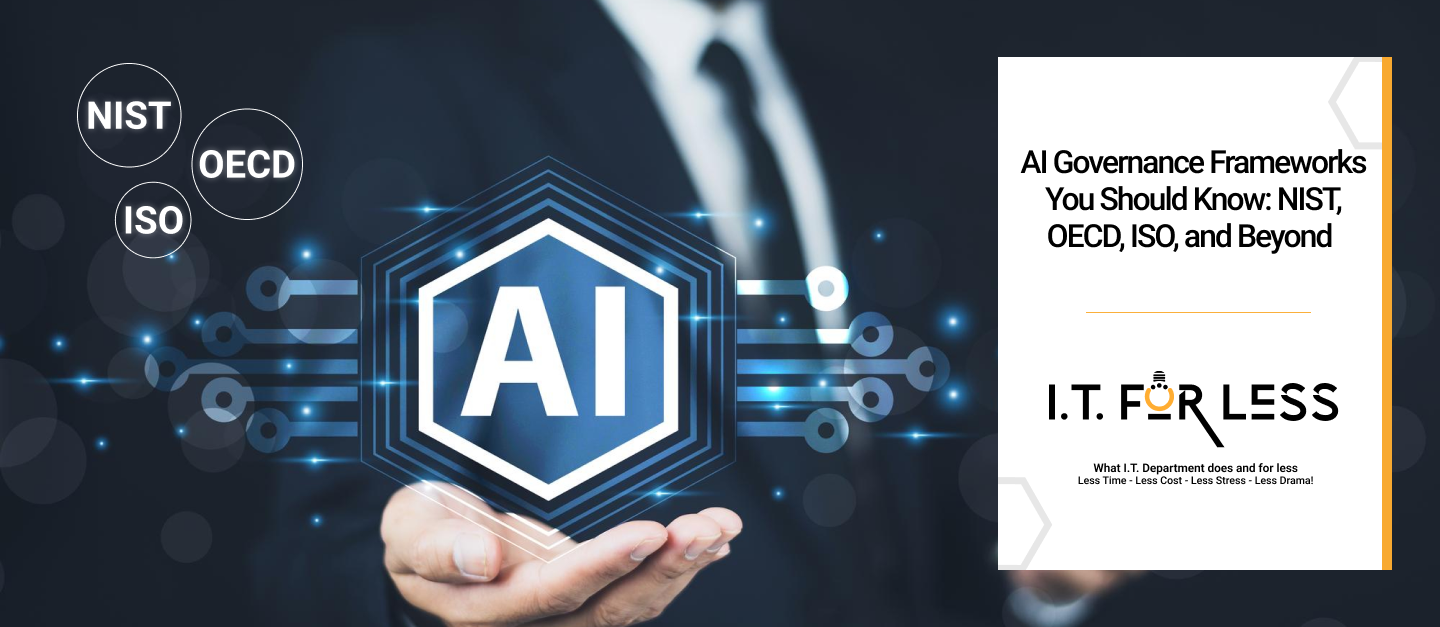As artificial intelligence becomes deeply embedded in global business operations, AI governance frameworks have emerged as essential guides for managing risk, ensuring compliance, and promoting ethical deployment. These frameworks provide structure — defining how organizations should design, test, and oversee AI systems to maintain transparency, accountability, and trust. For IT leaders, understanding these global standards isn’t optional — it’s a roadmap for building responsible AI that’s sustainable, compliant, and future-ready.
NIST AI Risk Management Framework (United States)
Developed by the U.S. National Institute of Standards and Technology (NIST), this framework focuses on identifying and mitigating AI risks throughout the system lifecycle. It emphasizes governance, data integrity, explainability, and human oversight. What makes NIST’s framework stand out is its flexibility — it can be applied to both regulated and unregulated sectors, helping organizations align innovation with accountability. AI governance frameworks like NIST’s aid in promoting a culture of continuous monitoring and iterative improvement, ensuring AI systems remain trustworthy and adaptable over time.
OECD Principles on AI (Global)
Adopted by over 40 countries, the OECD Principles on Artificial Intelligence represent one of the first international standards for responsible AI. The framework focuses on five key values: inclusive growth, human-centered design, transparency, robustness, and accountability. Its global recognition makes it a foundation for other regional regulations, including the EU AI Act. By following OECD principles, organizations can demonstrate global alignment and an AI governance ethos that commits to ethical innovation.
ISO/IEC Standards (International)
The International Organization for Standardization (ISO) and International Electrotechnical Commission (IEC) have developed several standards to ensure consistency in AI development and management. Standards such as ISO/IEC 42001 (AI Management System) and ISO/IEC 23894 (AI Risk Management) define best practices for system governance, model validation, and data quality control. These standards are particularly valuable for multinational enterprises that need a unified governance framework across jurisdictions. For global conformance, AI governance frameworks help transform abstract ethical goals into measurable, auditable processes.
Emerging Regional Frameworks
Beyond these major standards, regional initiatives — such as the EU AI Act, Canada’s Directive on Automated Decision-Making, and Singapore’s AI Verify program — are setting new benchmarks for AI accountability. These frameworks share a common goal: ensuring that AI remains fair, explainable, and human-centered, regardless of where it operates, and demonstrate emerging AI governance frameworks setting standards that organizations must follow.
For global organizations, adopting a hybrid governance approach that aligns internal policies with multiple frameworks ensures smoother compliance and a stronger ethical foundation.
Building a Unified Approach
While each framework has its own focus, their underlying message is consistent — responsible AI is built on transparency, fairness, and accountability. Businesses that adopt structured governance, aided by AI governance frameworks, not only reduce regulatory risk but also position themselves as trustworthy innovators in an increasingly scrutinized digital ecosystem.
Partner for Responsible AI Implementation
Partner with I.T. For Less today and take the first step toward building an AI governance strategy that aligns with global standards — keeping your IT flowing as effortlessly as your ambition, secure, compliant, and built for the future, solidifying your commitment to AI governance frameworks.
